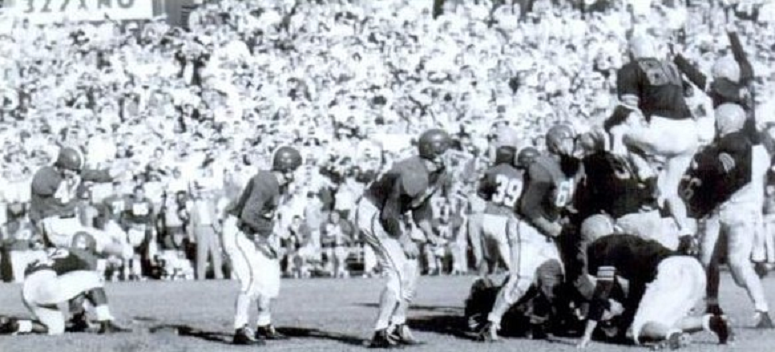


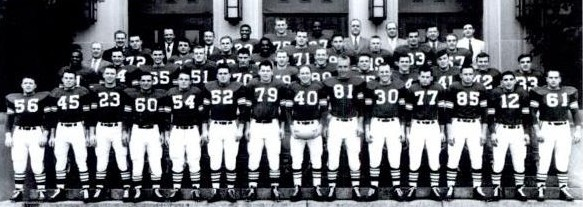
| at Michigan (5-4) | 27-13 | |
| at Oregon State (2-7) | 17-14 | |
| Texas A&M (3-6-1) | 48-6 | |
| Syracuse (7-3) | 48-7 | #14 |
| Penn State (7-2-1) | 34-7 | #16 |
| at Purdue (4-3-2) | 14-7 | #20 |
| at Indiana (2-7) | 41-14 | |
| Notre Dame (7-2-1) | 21-3 | #3 |
| Marquette (3-5-1) | 62-13 |
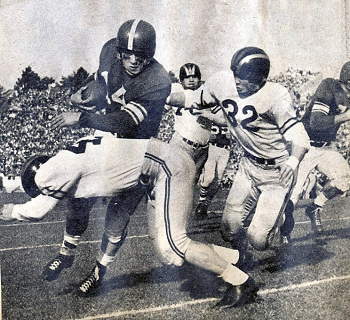
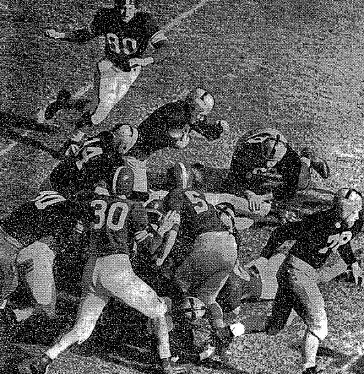
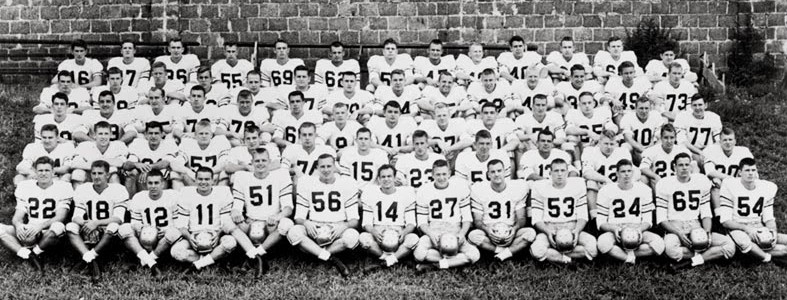
| Citadel (3-5-1) | 54-6 | |
| Florida (8-3) | 17-14 | #12 |
| at Southern Methodist (4-5-1) | 20-7 | |
| Tulane (5-5) | 14-0 | |
| Auburn (2-8) | 33-0 | |
| Vanderbilt (3-5-2) | 30-0 | |
| at Duke (8-2) | 28-7 | #13 |
| Army (4-4-1) | 45-6 | |
| Alabama (10-2) | 7-3 | #8 |
| Florida State (1-8-1) | 30-0 | |
| at Georgia (7-4) | 23-9 | #18 |
| Sugar Bowl Mississippi (8-1-2) | 24-7 | #10 |
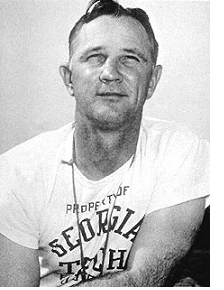 Georgia
Tech had long been a power team in the South. Hall of Fame coach John
Heisman went 102-29-7 here 1904-1919, winning the South's first MNC in 1917.
That team is among the greatest of all time, outscoring opponents
491-17. Hall of Fame coach William Alexander took the reins next and
went 134-95-5 at Tech 1920-1944, winning 8 conference titles and
another MNC in 1928. Alexander was followed by another Hall of Famer, Bobby Dodd (pictured at left).
Georgia
Tech had long been a power team in the South. Hall of Fame coach John
Heisman went 102-29-7 here 1904-1919, winning the South's first MNC in 1917.
That team is among the greatest of all time, outscoring opponents
491-17. Hall of Fame coach William Alexander took the reins next and
went 134-95-5 at Tech 1920-1944, winning 8 conference titles and
another MNC in 1928. Alexander was followed by another Hall of Famer, Bobby Dodd (pictured at left).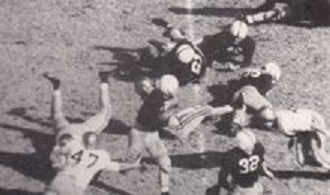
| Michigan State 9-0 | Georgia Tech 12-0 | ||||||||||||||||||||||||||||||||
|---|---|---|---|---|---|---|---|---|---|---|---|---|---|---|---|---|---|---|---|---|---|---|---|---|---|---|---|---|---|---|---|---|---|
|
|
||||||||||||||||||||||||||||||||
| 1) DeVold
(math system) |
4.94 |
| 2)
College
Football Researchers Association |
4.91 |
| 3) National Championship Foundation | 4.78 |
| 4) Billingsley (math) | 4.70 |
| 5) Houlgate (math) | 4.53 |
| 6) Dunkel (math) | 4.48 |
| 7) Poling
(math) |
4.46 |
| 8) Boand (math) | 4.42 |
| 9) Sagarin-ELO (math) | 4.37 |
| 10) AP Poll | 4.36 |
| 11) Litkenhous
(math) Sagarin (math) |
4.16 |
| 13) Helms Foundation | 3.94 |
| 14) Berryman (math) | 3.78 |
| 15) Williamson (math) | 3.44 |
| 1) Boand (math system) | 4.26 |
| 2) College Football Researchers Association | 4.22 |
| 3) Poling (math) | 4.11 |
| 4) Helms | 4.09 |
| 5) Sagarin-ELO (math) | 4.06 |
| 6) National Championship Foundation | 3.96 |
| 7) Dickinson (math) | 3.49 |
| 8) Houlgate (math) | 3.35 |
| 9) Billingsley (math) | 3.34 |
| 10) Sagarin (math) | 3.28 |
| 11) Parke Davis | 2.77 |
| 1) Houlgate (math system) | 4.5 |
| 2) Helms | 4.3 |
| 3) Parke Davis | 4.2 |
| 4) National Championship Foundation | 3.7 |
| 5) Billingsley (math) | 3.6 |